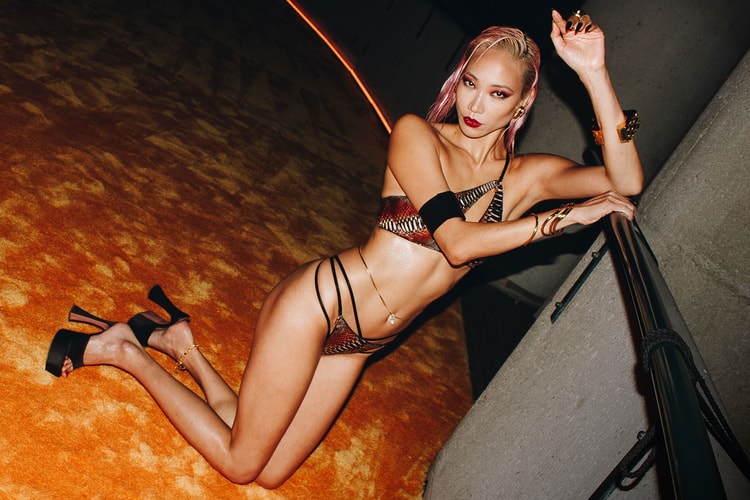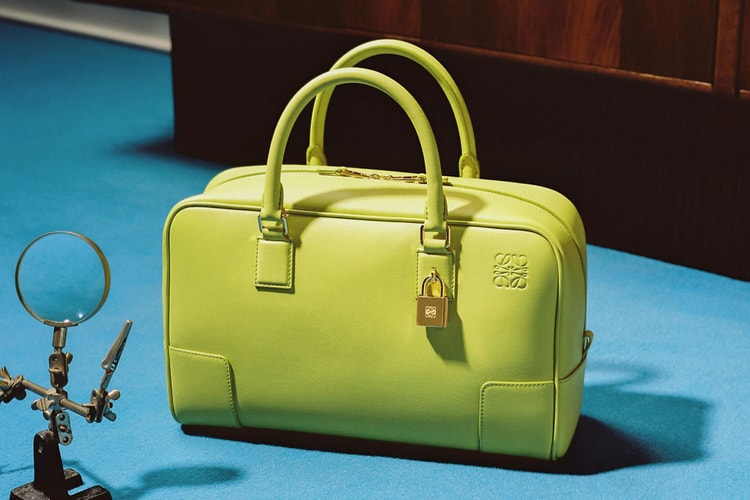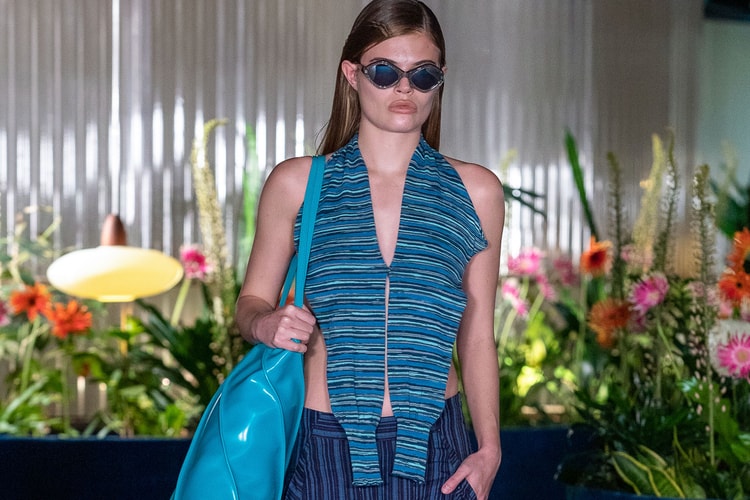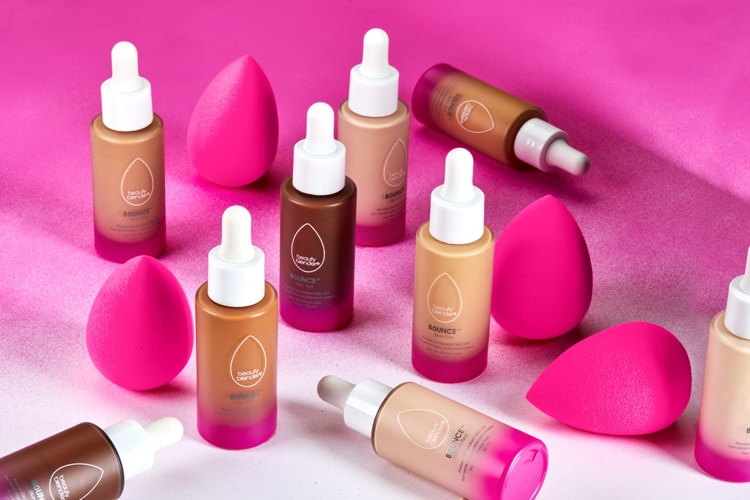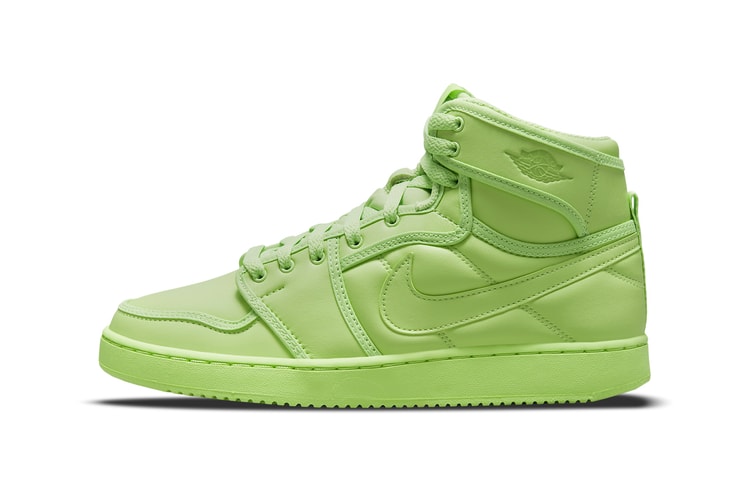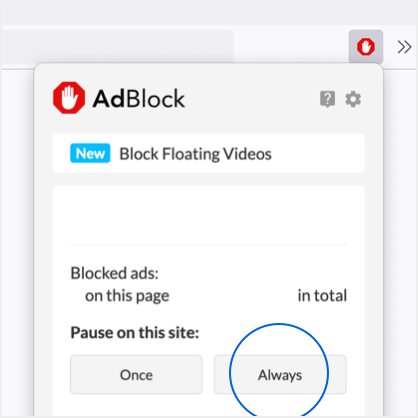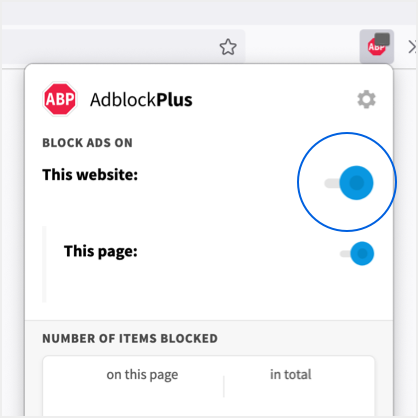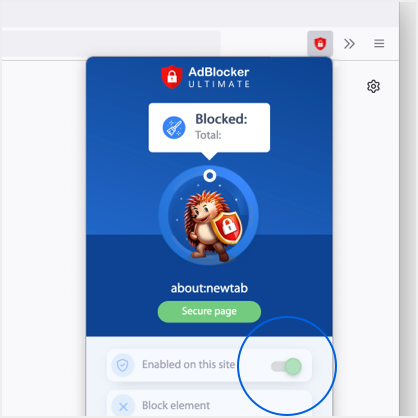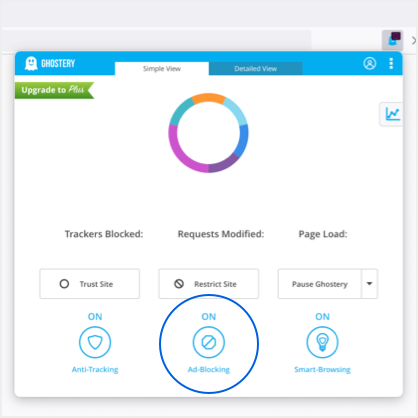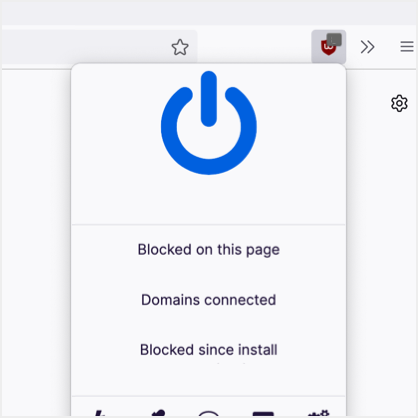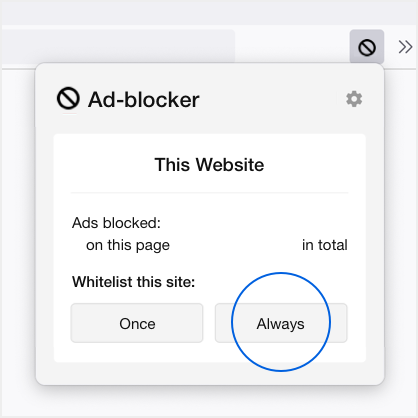
Deja Foxx Is Running the World From Point A to Generation Z
The strategist, activist and Instagram creator is effecting change.
As the founder of GenZ Girl Gang, a community for women and femmes to redefine sisterhood, Deja Foxx is leading the Gen Z masses and spearheading conversations about what success means in the 21st century. Just two years ago, a then-19-year-old Foxx was serving as a strategist for Kamala Harris‘ presidential campaign. Currently, the 21-year-old Instagram creator and strategist is studying at Columbia University, signed to Ford Models and has recently launched an Instagram Live talk show series. How does she do it all?
Although she’s known for her activism, engaging social media accounts and outspoken nature in the political and organizational spaces, Foxx told us that you don’t need thousands of followers and a picket sign to be an activist. “I worked at a gas station and I considered myself an activist in the way that I engaged with the people I was interacting with every day,” Foxx said passionately and encouragingly. “You can be an activist in your classroom. You can be an activist on social media. I think it’s actually a core value and something that we can carry into every aspect of the things we do.”
HYPEBAE spoke to Foxx about how she practices digital wellness while having a professional career in social media, how she sees performative activism, and her feelings about Harris becoming the first Black female Vice President of the United States.
To learn more about Foxx’s work, head to the GenZ Girl Gang website. The group’s next event, Instagram x GenZ Girl Gang Present — The Back to School Survival Summit, is slated for September 26.
View this post on Instagram
Gen Z has really been taking the reins when it comes to social media activism. As the leader of GenZ Girl Gang and an Instagram creator, how do you make sure to put your mental health first?
I wouldn’t say that I’m the best at it. I think it’s a thing that I’m learning too. From the perspective of someone who does social media as a career, both on the side of a creator and as a strategist and a leader or founder, I often hear people give advices like, “Just walk away or delete your accounts.” I am someone who relies on these for financial stability, for my financial well-being. My teams rely on me to be present. Learning how to co-exist with social media and to create boundaries with it in the same way we might with other aspects of our professional life has been really important for me.
Some of the ways that I do that is by turning off all of my notifications, and by prioritizing and finding ways to really curate the content I consume. Personally, I’m staying in touch with my friends and family [on social media], but also professionally, [I remind myself] that what I’m doing here is work.
On a larger note though, this pandemic is having a really unique impact on a lot of teens and Gen Zers who are at the intersection of social media and social development. For young people like me who don’t come from family networks, this is a really big time for building that network that then creates professional success and even well-being — everyone talks about their college friends. Social media is playing a big part in allowing us to at least still create some new connections, which is what being at this age is all about. We’re missing out on that because we can’t be out and about in the ways that we maybe could have two or three years ago.
“Learning how to co-exist with social media and to create boundaries with it in the same way we might with other aspects of our professional life has been really important for me.”
The term “activist” is adopted by many nowadays, but you really are the definition of being on the ground and using your voice. How would you say that Gen Z has redefined what it means to be an activist in the 21st century?
I got my start as a grassroots organizer. I was organizing around sex education in my school district from the place of my personal experience, as someone who experienced firsthand what it was like to not have a home of my own. Hidden homelessness is something that one in 30 teens in the U.S. experiences. If your classes look anything like mine, it’s literally one person in every classroom. [That means] not having parents at home to help fill in the gaps of a really outdated sex education curriculum.
My Arizona sex-ed was last updated in the ‘80s, meaning that it’s potentially the same when my mom was learning. I went to school board meetings, used my personal story to create change, and used my personal network to really build that momentum. That means bringing my friends, my significant other and my teachers along; tapping the people who cared about me, who had a stake in me to create change.
I think that both personal story and personal network are the core tenets of how we can use social media tools [for activism]. It’s about how we share our story, and how we connect with our network. There’s a real potential to use these tools as community-building tools, but also as change-making tools. It’s actually inevitable that this is the direction we head.
A term that I really like to think about is digital relational organizing. Relational organizing being this idea of tapping the people who care about you to take an action, because they have a stake in you. I absolutely see social media as a way to do that at scale. I’ve gone on to apply that theory to everything from brands to nonprofits, to [political action committees], to presidential campaigns.
“I really refrain from this idea of labeling activism as performative or lesser, because I recognize that everyone has a different role to play and that we can all be activists in our own ways.”
For those who are new to the activism space, how would you define performative activism?
Performative activism is something that we throw around a lot. It’s something that I hear a lot about, especially as it relates to digital and social media, but I refrain from putting that label onto others. I see that each of us has our own space in this work. Each of us has our own set of talents, our own privileges and assets to leverage. Instead of labeling or demeaning what others are doing, I’ve always been one of those people who’s focused on doing my piece as well as I can. That’s how we really focus on movement building. Allow people to experiment with new ways of being, new ways of activating — that really is what social media is all about. Not every way that we try to do this is going to be the best or the most effective, but it’s all brand new. We have to accept that people are learning and building new strategies as they go.
I really refrain from this idea of labeling activism as performative or lesser, because I recognize that everyone has a different role to play and that we can all be activists in our own ways. Too often, we think of it as a career path, or there’s a handful of people who get to be activists. I actually believe that activism applies to our everyday lives and that you can be an activist in whatever workspace you’re in. I worked at a gas station and I considered myself an activist in the way that I engaged with the people I was interacting with every day. You can be an activist in your classroom. You can be an activist on social media. I think it’s actually a core value and something that we can carry into every aspect of the things we do.
View this post on Instagram
Tell me about your new Instagram Live talk show series, “Leaders of Today.” What’s the importance of highlighting younger people who aren’t just leaders of tomorrow, but are actually on the ground and leading today?
As a young person, I’ve been doing social work particularly around reproductive justice, but I’ve also been organizing since I was 15 years old. I know that there are amazing young people out there creating and effecting real change from the school boards to the White House. I know that there’s no lack of young people doing this work. In fact, all too often in change-making strategy, young people are asked to be the implementers, to be the ones door knocking, voting, tabling. Young people are asked to be out on the front lines of protests, but are often not allowed into the room as strategists, messengers, leaders or to be on the board of directors.
Including young people is a core tenet of what creates an intergenerational and stronger movement with diverse perspectives, particularly as it relates to the way that we embrace social media as an inevitable part of life and a new platform for change-making. The [reason I created "Leaders of Today"] was to highlight those young people who are doing the work, who are the leaders of today, and to show that it’s not this idea of waiting. Gen Z is a generation that is making things happen in the here and the now. We are the generation who have been empowered by Google. If you want to start a nonprofit, all you have to do is google it. We are really taking up a unique position.
It can also be said that in every movement, there has been a history of young people being at the forefront, but that is not new to our generation either. The young people have always been really at the backbone of a lot of our movements historically. I wanted to highlight those young women and femmes, give them the shine that they deserve, but also get their perspective. I asked so many of them what word they would use to describe the future that they’re creating and these concepts of re-imagining worlds that are more loving and empathetic and connected were really reoccurring. That was really inspirational to me because so much of the work that we do as change-makers is creative. We have to work to create a future, but we have to envision that future too. Young people are particularly suited to do that visionary work.
“Gen Z is a generation that is making things happen in the here and the now. … If you want to start a nonprofit, all you have to do is google it. We are really taking up a unique position.”
At 19 years old, you got your start in the political space as a strategist for Kamala Harris’ presidential campaign. Now, look at her — she’s the first Black woman VP. What were your thoughts when she was chosen to be President Joe Biden’s VP, and what is your hope for the future of women and women of color in activism and politics?
I was overjoyed. You have to remember that when I worked on her campaign, it was in the primary so I was taking a really big risk. In hindsight, it’s a little bit easier. The risk was a little bit smaller because we’ve seen that she really came out on top, but at the time, there were 20 people running for president. It was still really early. I took the step of withdrawing from school. I’m the first of my family to go to college. It was a big deal and I didn’t really have much money. I was a first-generation college student, a low income student, and I made the jump to a city I’d never been to, signing a lease on my first apartment — that was the first apartment I ever had a dryer in. My life was changing really fast.
On a personal level, this was a big deal for me. I put in so much, not only time, energy and effort, but also emotional capacity into this. A large part of my job as an influencer and surrogate strategist was monitoring the discourse about her online. I selected this campaign because I see myself in her. As a woman of color, as the first [in my family] to do many things, as someone raised by a single mom, and as a first-generation American, I share so many identities with this person. I see myself and that’s why I took these leaps. Then to be exposed every day to everybody’s opinions really took an emotional toll. Seeing her come to the top was personally validating.
I think this was the feeling that so many women and girls, particularly young women and girls of color, had when we saw her. She had overcome all the things that people had said, all the doubts people had casted, and that was really powerful. During her campaign, I got to lead an activation called “This Is What A President Looks Like” where we put up stickers that said “This is what a president looks like” on mirrors and brought them out to our field stations. For about a year, my background on my phone were these little girls holding up the signs and standing in the mirrors. That visual really speaks to why it’s so important that we invest in young women and women of color, particularly because we’re seeing what is possible.
There are a lot of [ways] that Kamala Harris is setting an example, is leading the way, opening doors, and leaving them open behind her. Her mom always used to say, “You’ll be the first to do many things, but don’t be the last.” That really rings true, as we define success differently than who’s held power for so many years — the success defined by white men has always been predicated on oppression. As we redefine success to include us, we know that it is actually predicated for us on collaboration, on pulling each other up. It’s really exciting to be able to redefine success in that way. I have a hand in it and in my own way, be a role model to others who look up to me.
View this post on Instagram
If you could give young Deja any piece of advice about maintaining her mental health throughout everything that’s happening in the world while being on the front lines, what advice would you give her?
I’m still young Deja. I feel like sometimes people forget that I’m 21 years old. I’m a child. I’m a kid. I just started being able to drink two months ago — come on. I try to give myself credit that no matter how grown I feel, no matter how adult I’ve been asked to be, how responsible I’ve been required to be in this life, I’m a kid. I give myself that grace. I give myself the grace to make mistakes, to learn from them and I give myself permission to have fun.
All too often, as someone who does change-making work, there’s a really heavy sense of responsibility. Fighting for birth control access literally isn’t just theoretical, it’s about my access to birth control. Can I afford birth control this month? It was a heavy burden to bear and there’s a real sense of survival on the table every day. Something that I’ve found for myself is that I’m deserving of freedom, fun and experience, and that the world that I want to create is defined by choice. The world that I want for my children is one where they have freedom, and so I want to embody that in my life too.
D’Shonda Brown is a freelance culture journalist, public speaker and mental health advocate based in Brooklyn, New York with a passion for mental health, social justice and uplifting the Black community through her writing. As a mental health advocate and suicide attempt survivor, in 2019, D’Shonda became Mental Health First Aid Certified for adults and children, and graduated from the Advocacy Ambassador Program by National Alliance on Mental Illness. D’Shonda is a proud Spelman College graduate and has interviewed notable names from Angela Rye and Soledad O’Brien to Chloe x Halle and Justine Skye.


